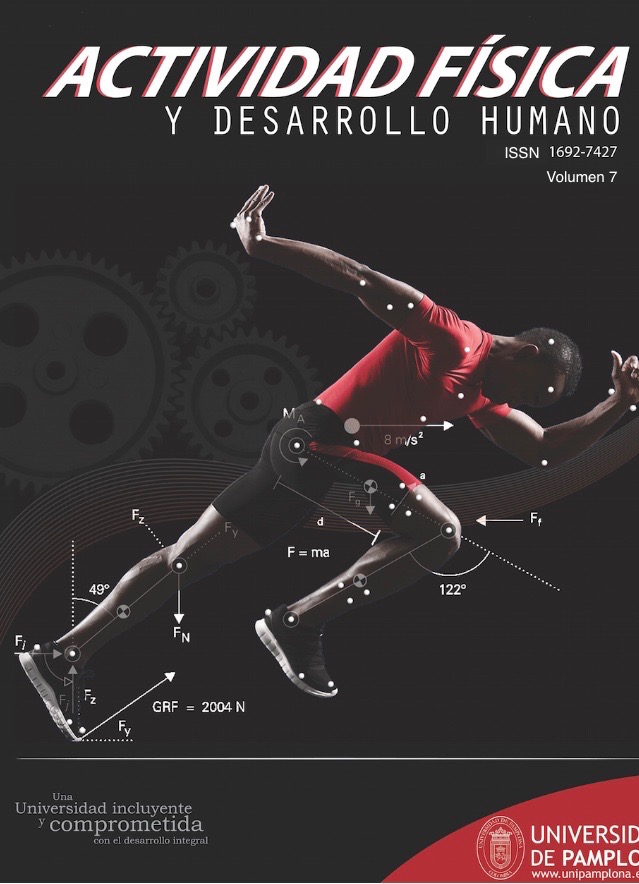Functional Autonomy of Older Adults: The Case of Older Adults in Tunja
DOI:
https://doi.org/10.24054/afdh.v7i1.1642Keywords:
Autonomía Funcional, adulto mayor, actividad física, coordinación, equilibrio, marcha, actividad de la vida diariaAbstract
The number of people reaching advanced adulthood in many countries around the world has increased dramatically over the last century. The main problem associated with aging is the loss of functional capacity and independence. Therefore, it is important to keep in mind that the life cycle of every human being passes through four stages: childhood, adolescence, adulthood, and old age, as proposed by Fernández (2010). Physical appearance and health status often contradict what might be expected based on chronological age. For example, at 60 years of age, the stage of older adulthood begins, during which the physiological process of aging is fully established. This is an inevitable process of gradual deterioration determined by all the changes that occur over time and that lead to functional alterations. Thus, old age is the accumulation of all involutive and irreversible physical and biological changes that occur in an organism over time and that lead to homeostatic failures incompatible with survival.
According to these processes, changes occur in the body that cause alterations at the biological level (genetics, chronic diseases, and physiology), psychological level (lifestyle, attitude, and feelings toward the process of change), and social level (gradual imbalance, physical frailty, and changes in roles such as reduced contact with family and friends, affecting factors of integration), as Gutiérrez (2007) notes. Consequently, these phenomena lead older adults to lose their functional autonomy.
The objective of this research is to evaluate the functional autonomy of older women who attend the IRDET and INDEPORTES institutions in the department of Boyacá in 2014 through the implementation of a physical activity plan, which took into account conditional and coordinative capacities, balance, gait, and activities of daily living. The aim is to provide better prospects regarding social life.
Downloads
References
AIMAR, A (2009). Desmitificando la vejez. Hacia una libertad situada. Una mirada crítica sobre la realidad cotidiana del adulto mayor. Villa María, editorial Eduvid
AGÜERO, M.(2010). Resultados de la influencia de un programa de ejercicios físicos que contribuya al retardo de la pérdida de la coordinación de movimientos en adultos mayores de http://www.efdeportes.com/efd150/retardo-de- la-perdida-de-la coordinacion-adultos.htm
CORNACHIONE,L.M,. Psicología del desarrollo; Aspectos biológicos, psicológicos y sociales; 2008) editorial Brujas,Córdoba República de Argentina
CHÁVEZ .S,J,. LOZANO. E,D. Agustín L. A,E,. VELÁZQUEZ. M,O,.(2004) La actividad física y el deporte en el adulto mayor Bases fisiológicas. Editorial Masson Doyma. Mexico
DEBRA.J . (2005). Equilibrio y moviliad en personas mayores . España : Paidotribo. DANE, Series de población 1985 – 2020. http://www.dane.gov.co/
DOMINGUEZ,C. ARELLANO, G., y ZIELOLD, H. (2005). Caida en el anciano: Factores asociados en 168 casos http://www.medigraphic.com/pdfs/actmed/am2005/am052b.pdf
FERRÁN.M Martínez Flotats G,F L; (2005 ). Rehabilitación domiciliaria: principios, indicadores y programas terapéuticos. Barcelona España: Masson S.A ORGANIZACIÓN MUNDIAL DE LA SALUD Grupo organico de enfermedades No transmisibles y Salud Mental Departamento de prevención de las enfermedades No transmisibles . (Abril de 2002). Envejecimiento Activo: Un marco politico.
MAHECHA.M,S, & cols ( 2003) Evolução do perfil neuromotor e capacidade funcional de mulheres fisicamente ativas de acordo com a idade cronológica Revista Brasilera Med Esporte _ Vol. 9, Nº 6 – Nov/Dez,
MAHECHA.M,S., (2002). Envelhecimiento, Actividade física e saúde. http://www.revistamineiraefi.ufv.br/artigos/arquivos/839d1ee91c7ac26f96fbcf0c816ebcc9.pdf.
SANHSUEZA, M., CASTRO, M., y MERINO, J. ( 2005). Adultos mayores funcionales: Un nuevo concepto en salud. Functionals elders : a new concept in health .
MIKEL, I,. (2008) BIOMECÁNICA Y BASES NEUROMUSCULARES DE LA ACTIVIDAD FÍSICA Y EL DEPORTE pág. 26, Capitulo 15. Control y análisis del equilibrio y la estabilidad en la Actividad Física y el Deporte; LÓPEZ J.L.
Downloads
Published
Issue
Section
License
Copyright (c) 2016 ACTIVIDAD FÍSICA Y DESARROLLO HUMANO

This work is licensed under a Creative Commons Attribution-NonCommercial-NoDerivatives 4.0 International License.











